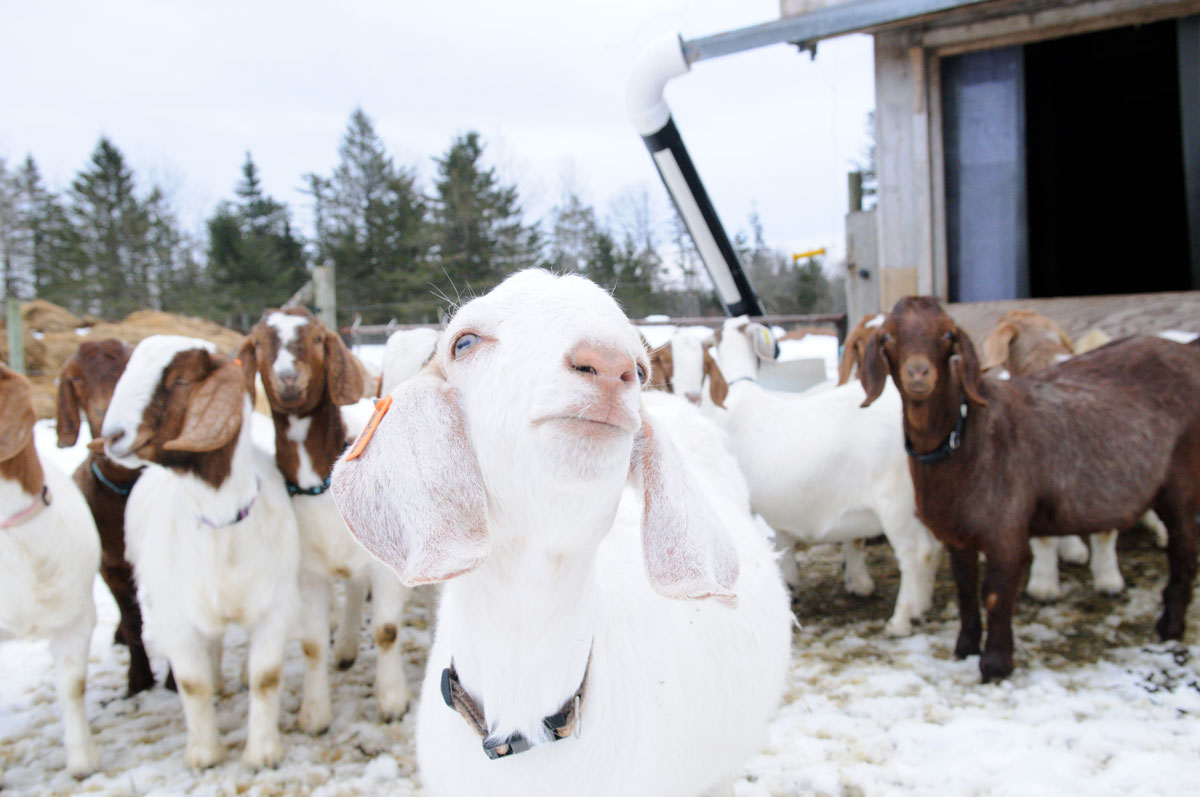Horns VS no-horns can be a strong and vigorous topic of debate amongst goat owners, but I’m not going to try to disprove one or the other. I’m just going to express my thoughts and learnings as to why WE do de-horn our does.
We de-horn all our doelings at less than 2 weeks of age, and will do some bucklings, if requested. They are weighed, so we can give them the appropriate pain dosage, and they are given a nerve block. The actual burning/de-horning process takes only seconds. The kids do not like it, they hate being restrained more than anything. And despite the lidocaine and the pain meds, I can assume it still hurts some. But once the process is done, they run back to momma, get a reassuring suckle of milk, and all is well in their world. Hopefully, it is the most traumatic thing that ever happens to them.
But why do we do it at all, take that risk at all, because it is a risk. There could be infection, we could do a bad job, leave the iron on too long, cause brain swelling and /or damage, kill the kid, so why?
If we leave the horns on, we can’t use collars. Goats are affectionate, social, territorial head-butting bullies. They rub each other, they butt, and jab each other, to establish dominance, punish, defend and establish their hierarchy in the herd. Horns can trap legs, or other goats’ horns, and a head toss or twist can trap and/or snap off legs. They can also catch collars, and a twist of the head can twist a collar, and lead to the strangulation of the other goat. Why can’t we just have horns and forget collars?
Horns can and will snap off if used too roughly, leading to an open wound that is gushing blood, and extremely painful for the goat. Think of ripping off a fingernail well down into the quick bed painful.
So, we have collars on all our does, and during pasture season, we use plastic chain collars with a break-away link, just in case they find some way to get caught on a tree or deadfall out there.
The breeding bucks, which are the only animals that we continue to purchase from outside sources, usually have their horns still. I usually can’t speak for bucks early enough for breeders to have them dehorned, not to mention that since meat goats are shown with their horns, as opposed to dairy breeds which are shown without horns, many of these breeders may not even own dehorners, or have the experience or comfort to do it safely, as many Veterinarians don’t have a lot of experience dehorning goats as well. Nothing will piss off the buck quicker than messing with their horns. Those are his horns, and no one else has the right to touch them! I will use their horns in a pinch, but only until I can get a collar or a head halter on them to handle them safely. A buck with a nice beard is an easy buck to handle as once I have ahold of him by the beard, he can’t get at me, and he is compliant to lead where I need him.
Another reason to dehorn the does is our method of feeding. We feed 2nd cut hay and feed grain, when appropriate, in our keyhole feeder mangers. Goats are notorious for wasting hay, and so good at it, they have two methods. There is the hay they pull out of the feeders, and it hits the floor, to be considered poisoned forevermore, and the second method is what they pick around and leave. 2nd cut hay doesn’t have a lot of the stemy stuff that the goats won’t eat, and it’s far more expensive. But it is also finer and pulls out of the feeder to fall on the floor far easier. By adjusting our spacing on our keyhole feeders, (and that didn’t happen overnight!) we seem to have found the perfect spacing, so very little hay hits the floor. If the does had horns, our spacing on the feeders would have to be at least twice what it is now, and a lot of hay would be wasted on the floor, causing my husband to cry bitter tears.
We’ve had some botched dehornings in the past, and the resulting skurs can be dealt with by banding or wire saw. If they wiggle, I can usually just twist-snap them off with the hoof trimmers during their regular pedicures, and the return growth seems to be less and less for every removal.
Many, many years ago I purchased a nice doe with horns to join a herd of non-horned does. I thought it would be a simple procedure to have her de-horned by the Vet. She was sedated (always a risk for goats), and the entire top of her head was removed with an electric saw to take off the horns, leaving her sinus cavities open to the air. You could look down into her head and hear her breathing through the hole into her sinus cavity. Every bit of everything fell into that open wound as it healed, spruce needles, flies, straw..just ugh! I did end up creating her a bonnet out of pantyhose to keep the dirt out and she healed up, eventually, but I will never, ever do that again. If they have horns, they can keep them, but it won’t be in my herd.


Interesting reads. Very informative.